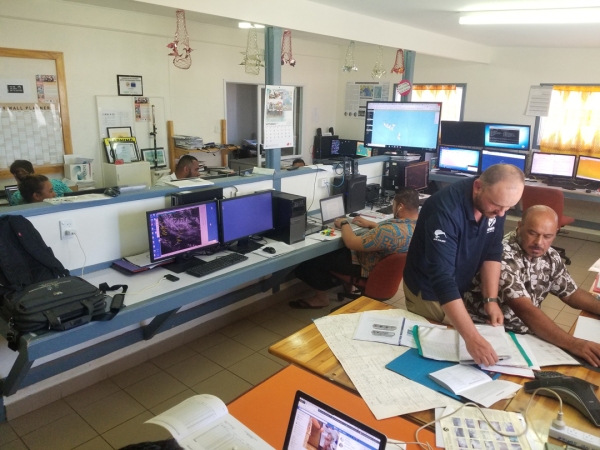There are about 800km between the southern and northern tips of Tonga - and a lot of ocean.
Many of this Pacific archipelago’s 169 islands are remote, exposed, sparsely populated and difficult to access. And when it comes to forecasting the weather in an area known for cyclones and also prone to drought, it’s a significant challenge.
However, that is all about to change.
NIWA is in the final stages of completing a project with the Tongan Meteorological Service (TMS) to install new weather stations and sea level monitoring equipment from one end of Tonga to the other. In what has been a huge logistical exercise six months in the planning and another year in the implementation, Tonga now has 21 new weather stations and two sea level monitoring stations.
One of the problems faced by TMS was the difficulty in receiving manual weather observations from parts of the country where there were no staff.
TMS head Ofa Faanunu said that challenge with communication, particularly from the outer islands, meant forecasts were less accurate and had long needed updating.
“We are now able to get data from these remote areas and can now work on building the capacity of the Met Office in all areas of forecasting.”
The project was part of the Climate Resilience Sector Project, funded by an Asian Development Bank (ADB) Grant. It will enable Tonga to be better prepared for extreme weather events and climate change as well as providing improved weather forecasting for businesses such as ferry operators and airlines.
NIWA principal scientist Dr Graham Elley, who managed the installations, says the new system was a complex logistical exercise but will help Tonga build resilience with effective warning of extreme weather and coastal events.
“The challenges started with how to get the equipment there. In the end we shipped three container loads, which was more than 20 tonnes, to the capital Tongatapu, and then faced the issue of how to get it – and the people we needed – to the outer islands to install it.”
With a lack of suitable vessels in Tonga during the installation period, the answer came in chartering a vessel from Tauranga with live-on accommodation which also had the advantage of being able to take the huge amounts of concrete needed for the job which was unable to be supplied locally.
But before that a team of from NIWA’s Instrument Systems Group assembled all the equipment and supporting infrastructure in Christchurch that went into the systems.
Without them, says Elley, the project would never have got off the ground.
Installations in Tonga commenced with a network of temporary wave and tide gauges to gather data to refine the models needed to produce continuous localised tide and wave forecasts for the region. These were in place for seven months.
Then the weather stations were installed across each of the seven island groups, with teams deployed in different areas. The most remote locations were targeted first to ensure they were operating before the cyclone season started in November. In the capital Tongatapu, about 15 staff installed the data management system and web portals needed to make the system operational and to enable users to access the data in a simplified, informative way.
Training has also been a key component of the project.
“At every stage we have providing on-the-job training which started with a couple of Tonga Met Service staff coming to New Zealand while we built the equipment so they could begin to gain an understanding of how the equipment operates."
“Then throughout the installation process, our staff provided training and it is still ongoing with staff now providing one-on-one site calibration and maintenance training.”
But it takes more than equipment and people power to bring such a large scale and technologically advanced project to fruition. Dr Elley says NIWA’s long history of working collaboratively in the Pacific – it has been involved in the installation of more than 240 weather stations in the region - meant that despite the many challenges the project went more smoothly than they had anticipated.
“We even got ahead of schedule at various times – mainly because of our experience gained doing other projects in the Pacific.”
“Ferry and shipping companies are now able to receive forecasts of the routes they use, predicting sea state for the next few days and at the extreme weather end, there will be a much better understanding of what is happening when and where.”
Mr Faanunu says TMS’ long working relationship with NIWA made the project easier – partly because both organisations take a regional approach to working in the Pacific.
And for one NIWA staff member working on the project was a homecoming of sorts.
Technician Aleki Taumoepeau left his homeland at the age of 11, so the chance to return and help his people was a career highlight.
“There are so many people who will benefit from this – shipping, ferries, airlines. It’s been one of the most satisfying projects I’ve been involved in – and once everything was planned out it was smooth sailing. And knowing you’re going to be actually helping your people was a real positive for me.”
This article forms part of our 2019 Summer Series and Water and Atmosphere - February 2020 edition.

